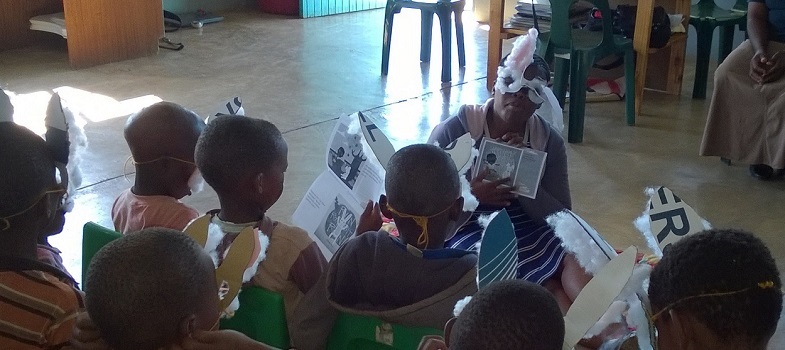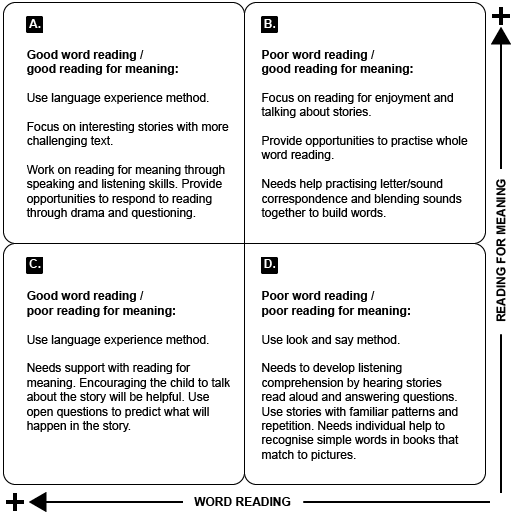Bringing it all together
An effective teacher will draw on all three of these methods to help children learn to read. They usually do these by finding a story that:
- will appeal to the children
- has some repeated words and rhyming words
- has words where they can use pictures (the look-and-say approach)
- has a picture of what is happening in the story (the language experience approach).
Activity 4.6: Reflecting on your learning
Spend some time browsing the ASb website [Tip: hold Ctrl and click a link to open it in a new tab. (Hide tip)] and find some stories that are suitable for supporting young readers. As you read the stories, think about which approach to reading you could use: letters and sounds, look-and-say, or the language experience approach. Do some stories lend themselves more to a particular approach? Share your ideas with a colleague.
This section of Teaching early reading in Africa has introduced you to three methods of teaching reading and given you a chance to try them out. You are encouraged not to restrict yourself to any one of these methods, but rather to combine them as required to support young readers. (In Section 5 you will see an example of how to use the methods together.)
It is important to remember that different children may respond better to one method than another:
- Some may have a better visual memory than others.
- Some may like analysing words into separate sounds and others may not.
- Some may like to be given more specific instructions than others; they may not like the freedom that the language experience approach offers.
If certain children are struggling to learn to read, you might find that concentrating on one particular method might help them overcome their difficulties.
Figure 4.2 shows that to be a good reader, you need to have good word reading and good reading for meaning. Some children may understand more easily than others what they read, but may have difficulty sounding out words and working out what they are. Others may be able to work out and recognise words, but have difficulty in understanding what they have read.
You will spend more time on Figure 4.2 in Activities 4.7 and 4.8.
Activity 4.7: How to use the figure
Talk about Figure 4.2 with a colleague or a friend. What does it tell you about how to help children with different strengths and weaknesses?
Discussion
The first quadrant (in the top left of the diagram) tells you about children who have good comprehension and good word recognition skills. These children do not need extra help, but you should give them some more difficult and challenging stories so that they can improve still further.
The second quadrant (in the top right of the diagram) tells you about children who have good comprehension and poor word-recognition skills. They understand quite easily but battle to work out what certain words say. You can support them by emphasising reading for pleasure by choosing stories that will motivate them. You can also provide extra help, by helping them to recognise the different sounds in a word.
The third quadrant (in the bottom left of the diagram) tells you about children who have poor comprehension but good word recognition skills. They can tell you what the words are but don’t know what the words and sentences mean. This can sometimes indicate other developmental problems which a teacher should monitor. They should benefit from writing and reading about their own lives and experiences. This will mean that what they read has meaning to them.
The fourth quadrant (in the bottom right of the diagram) tells you about children who have poor comprehension and poor word recognition skills. They are battling with all aspects of reading. They need texts that will motivate and enthuse them, and are related to their everyday lives. They will benefit from a lot of extra work with the look-and-say method.
Activity 4.8: Which method of word recognition and good comprehension should you use?
Method 3: Language experience approach




